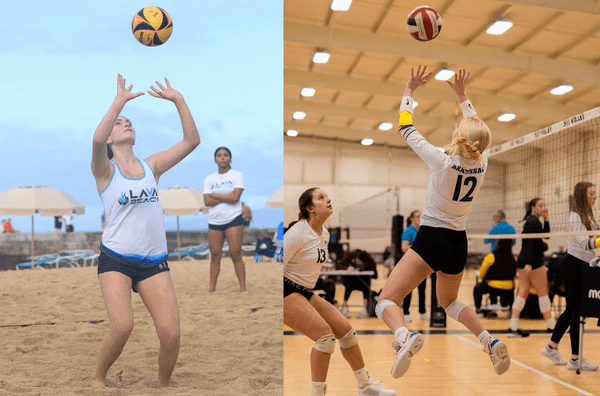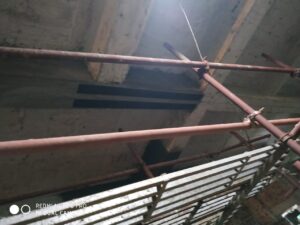
When you’re setting up a volleyball court indoors, getting the indoor volleyball net height just right is more than a detail—it’s a crucial standard that affects how the game plays out for both amateurs and professionals.
Whether you’re outfitting a school gym, rec center, or personal facility, you must understand the correct height regulations, the reasons behind the variations, and how to choose the right net system to ensure competitive fairness and player safety.
Why Net Height Matters in Indoor Volleyball
The height of the volleyball net isn’t just a random number—it plays a key role in:
-
Balancing offensive and defensive gameplay
-
Promoting fair competition between players
-
Reducing injury risks due to overreaching or improper form
-
Ensuring the game complies with official rules
A few inches too high or low can dramatically shift the nature of the game, especially in youth and professional settings.
Official Indoor Volleyball Net Height Standards
Let’s break down the official standards according to the FIVB (Fédération Internationale de Volleyball) and USA Volleyball (USAV) regulations.
Men’s Indoor Volleyball Net Height
-
Height: 2.43 meters (7 feet 11 5/8 inches)
This height is standard for:
-
Professional male players
-
High school boys (ages 15 and above)
-
College and club men’s competitions
Women’s Indoor Volleyball Net Height
-
Height: 2.24 meters (7 feet 4 1/8 inches)
Used for:
-
Female high school, college, and pro teams
-
Competitive women’s leagues
Co-ed Volleyball Net Height
-
Generally uses men’s standard height: 2.43 meters
-
Some leagues adjust based on team structure
Indoor Volleyball Net Heights for Youth
Younger age groups have specially adjusted net heights for better gameplay and injury prevention.
| Age Group | Boys’ Net Height | Girls’ Net Height |
|---|---|---|
| 12 & Under | 2.13 m (7’0”) | 2.13 m (7’0”) |
| 13–14 | 2.24 m (7’4 1/8”) | 2.24 m (7’4 1/8”) |
| 15–16 | 2.35 m (7’8 1/2”) | 2.24 m (7’4 1/8”) |
These modifications help young athletes focus on technique rather than sheer strength.
Factors That Can Affect Net Height Indoors
While standards are fixed, certain variables can unintentionally affect net height.
1. Flooring Material
Wooden floors may slightly impact net pole stability or measurements if not properly installed.
2. Tensioning System
Inconsistent tension across the net can make the center sag, dropping the middle height below regulation.
3. Wear and Tear
Old or overused nets can stretch, subtly altering height over time.
4. Environmental Conditions
Indoor humidity and temperature can cause net materials to expand or contract, affecting net performance.
Measuring Indoor Volleyball Net Height Correctly
To ensure accuracy:
-
Use a metal tape measure
-
Measure from the center of the court
-
Verify both ends are level with the center
-
Check with a spirit level if needed
You’ll want the height to match regulation standards at the center and be no more than 2 cm higher at the ends.
How to Set Up an Indoor Volleyball Net
Step-by-Step Setup Guide
-
Anchor the Poles: Make sure poles are set firmly into floor sleeves.
-
Attach the Net: Hook both sides securely using tie cables or net clips.
-
Center Alignment: Confirm the net is centered and aligned with the court markings.
-
Apply Tension: Tighten top and bottom cables evenly.
-
Measure and Adjust: Use your tape measure and spirit level to finalize height.
A regulation-compliant net not only boosts performance—it also ensures safety.
Choosing the Right Indoor Volleyball Net System
If you’re purchasing for a facility, here’s what to look for:
| Feature | Why It Matters |
|---|---|
| Adjustable Height | Accommodates various age groups |
| Tensioning Mechanism | Prevents sagging and keeps net level |
| Durable Material | Nylon or Kevlar is preferred for indoor use |
| Padding | Ensures player safety around poles |
Many systems come with height markers etched or painted onto the poles for easier adjustments.
Common Mistakes in Indoor Net Setup
-
Ignoring Sag: A drooping center often leads to game disruptions and resets.
-
Improper Tension: Loose nets can alter the ball’s bounce and players’ jump timing.
-
Guessing Height: Visual estimation is not reliable—always measure.
-
Uneven Court Markings: Misaligned courts can cause confusion even if net height is correct.
Avoid these pitfalls by investing time in proper setup and periodic net inspections.
Training Tips for Adjusting to Net Height
Whether you’re a coach or a player, adapting your playstyle to the net height is critical.
-
Blocking Drills: Focus on vertical leap and timing.
-
Spiking Practice: Adjust hitting angle to net level.
-
Serve Over Net: Practice consistent ball clearance just above net level.
-
Reaction Time: Low nets demand faster decision-making during rallies.
These tips help improve coordination and game IQ relative to net height standards.
Indoor vs Outdoor Volleyball Net Heights: What’s the Difference?
While this guide focuses on indoor volleyball, it’s worth noting that outdoor volleyball net heights are typically the same, but the setup process differs due to:
-
Use of sand or grass surfaces
-
Anchoring methods with stakes instead of fixed sleeves
-
Greater net sag due to environmental factors like wind
Indoors, the controlled environment means more precise and consistent play, making accurate height even more important.
Conclusion
Mastering the correct indoor volleyball net height isn’t just about meeting technical specs—it shapes the entire gameplay experience. Whether you’re running a gym, coaching a team, or simply passionate about the sport, ensuring your setup aligns with official standards is non-negotiable.





